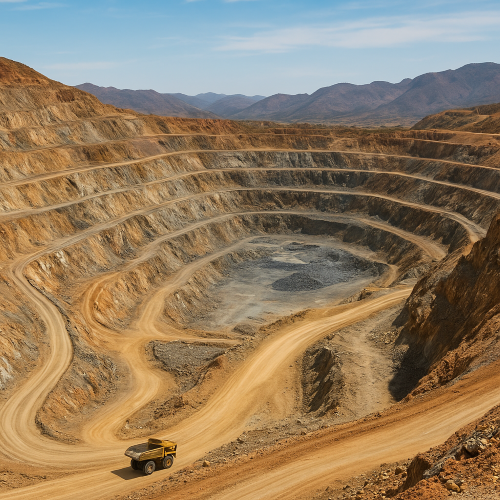How did China monopolized 90% of refining rare earth materials?. What were Americans thinking even though they developed, found a way to use in technology

Let’s unpack it in full, because this involves decades of industrial strategy, complacency, and geopolitical trade-offs.
1. The Historical Context: How It Began in the U.S.
America actually started it
-
In the 1950s–1970s, the United States led in discovering, mining, and refining rare earth elements (REEs).
-
The Mountain Pass Mine in California (owned by Molycorp) was once the world’s top producer of rare earths.
-
These materials were critical to defense tech, semiconductors, magnets, and later—smartphones, EVs, wind turbines, and more.
But by the 1980s, U.S. priorities shifted:
-
Environmental regulations became stricter (acid waste, radioactive byproducts).
-
Manufacturing began offshoring to Asia, as America focused on services, software, and finance.
-
Cheap labor and fewer environmental constraints made refining in China far cheaper.
So U.S. policymakers and corporations said, essentially:
“We can buy from China—it’s cheaper, and we’ll keep focusing on high-tech design and innovation.”
That was the strategic blind spot.
2. China’s Industrial Masterplan: Turning Low Prices into Total Control
China saw what the West didn’t — that refining = leverage.
Starting in the 1980s, Deng Xiaoping’s government made a deliberate national decision:
“The Middle East has oil; China has rare earths.”
China recognized that controlling rare earths meant controlling the backbone of modern technology — not just for gadgets, but for defense systems, satellites, and electric mobility.
So, China executed a 30-year playbook:
a. Subsidized Extraction and Refining
-
Offered cheap loans, tax breaks, and low-cost electricity for REE refining plants.
-
Ignored the environmental costs — focusing purely on industrial dominance.
b. Flooded Global Markets
-
By undercutting global prices by up to 40–60%, Chinese producers bankrupted Western mines and refineries (including Molycorp in the U.S. by 2002).
-
Once rivals collapsed, China could quietly raise prices and set global terms.
c. Integrated Supply Chain
-
China didn’t stop at refining — it built entire ecosystems:
-
Magnet factories
-
Electronics manufacturing
-
EV battery chains
-
-
This vertical integration made rare earth control a pillar of Chinese industrial power.
d. Export Quotas and Strategic Leverage
-
In the 2010s, China used export quotas as a diplomatic weapon — particularly against Japan during a territorial dispute.
-
The message was clear: “Depend on us at your own risk.”
3. What Were Americans (and the West) Thinking?
Honestly — there were three main miscalculations:
1. Overconfidence in Free Markets
American policymakers assumed:
“If rare earths are important, the market will correct itself.”
But refining rare earths isn’t a normal commodity market — it’s capital-intensive, dirty, and slow to restart once abandoned. China’s state-driven strategy outcompeted Western free-market logic.
2. Tech Illusion
The U.S. and its allies focused on software, finance, and digital tech, assuming manufacturing and materials were “old economy.”
They believed innovation and patents mattered more than physical supply chains.
The mindset was:
“We design iPhones; they just make them.”
But whoever refines the rare earths controls who can make iPhones.
3. Environmental and Political Short-Termism
Refining rare earths creates toxic waste.
U.S. voters and lawmakers preferred outsourcing the pollution rather than investing in clean refining technologies domestically.
So China said, “We’ll take it,” and paid the environmental price for global dominance.
4. The Result: China’s 90% Monopoly
Today:
-
China refines 90%+ of the world’s rare earths,
-
Controls 70–80% of mining of key minerals like dysprosium, neodymium, and terbium,
-
And produces over 90% of rare earth magnets, vital for EVs, wind turbines, and F-35 jet engines.
In other words, almost every advanced economy — including the U.S. — is strategically dependent on China for critical materials.
It’s not just about supply chains — it’s geopolitical leverage.
5. The Strategic Awakening: What’s Changing Now
In the last decade, especially post-2018, the U.S., Japan, and the EU have realized the danger.
Efforts now include:
-
Reopening Mountain Pass (now partly operational with support from the U.S. government).
-
Partnerships with Australia, Canada, and Africa for mining.
-
Research into alternative materials and recycling.
-
Legislation under the CHIPS and Inflation Reduction Acts to boost domestic refining.
But rebuilding a rare earth ecosystem takes 10–15 years — and China already has decades of head start, expertise, and sunk cost advantages.
6. The Deeper Lesson
This isn’t just about minerals. It’s about how power shifts in the modern world.
-
The U.S. invented the technologies.
-
China monopolized the materials.
-
Whoever controls inputs controls innovation and independence.
America’s mistake wasn’t ignorance — it was arrogance and short-term thinking.
China’s success wasn’t luck — it was long-term industrial strategy anchored in national interest.
7. Key Takeaway
Control of materials = control of technology.
Control of technology = control of power.
China built an empire not by invading nations — but by mastering the minerals that make modern civilization possible.
www.ubuntusafa.com Editorial-
“Industrial wisdom is not about who finds the minerals, but who transforms them.”
- Questions and Answers
- Opinion
- Motivational and Inspiring Story
- Technology
- Live and Let live
- Focus
- Geopolitics
- Military-Arms/Equipment
- Security
- Economy
- Beasts of Nations
- Machine Tools-The “Mother Industry”
- Art
- Causes
- Crafts
- Dance
- Drinks
- Film/Movie
- Fitness
- Food
- Games
- Gardening
- Health
- Home
- Literature
- Music
- Networking
- Other
- Party
- Religion
- Shopping
- Sports
- Theater
- Health and Wellness
- News
- Culture

